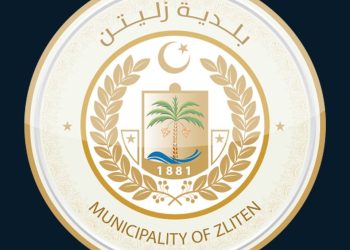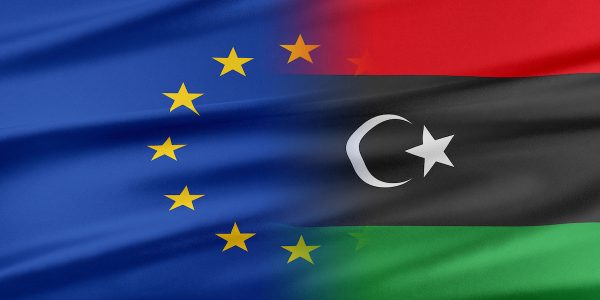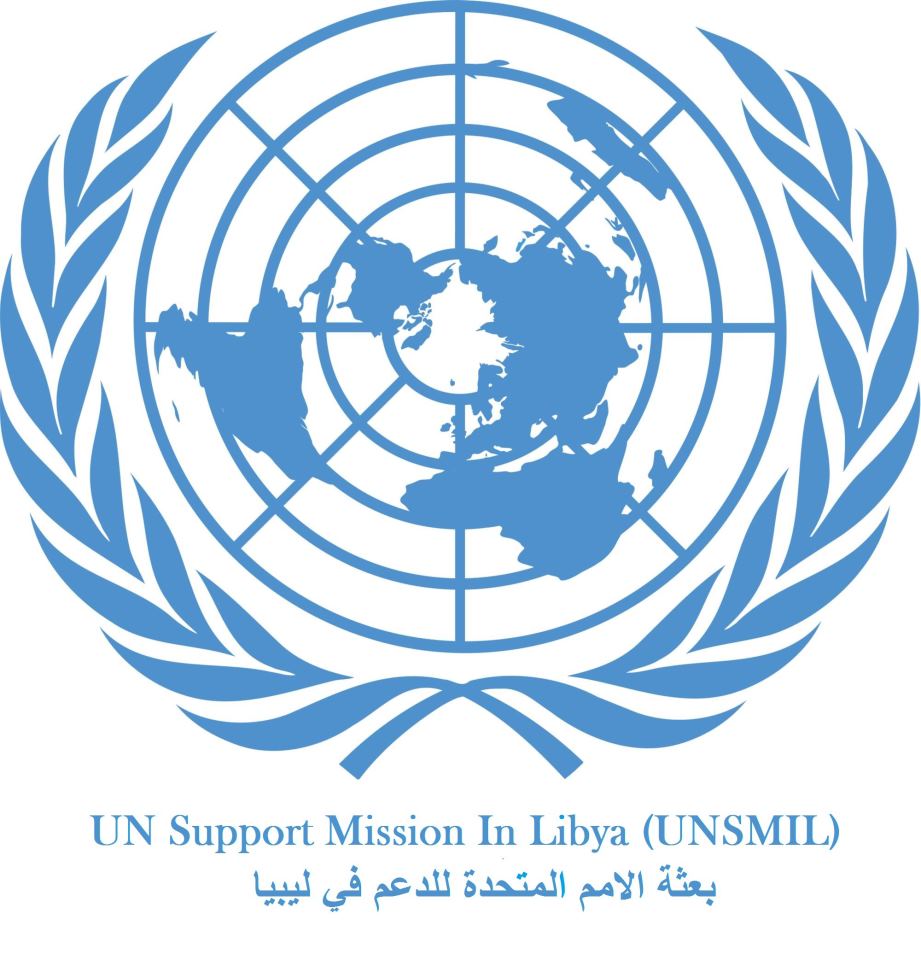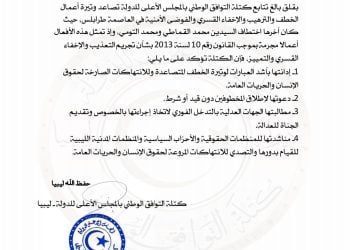By Nancy Porsia.
Misrata, 19 May 2013:
Tension is mounting in Misrata over plans for a peaceful return by Tawargha people to their . . .[restrict]town on June 25, announced by the community’s elders 12 days ago.
Two days ago, an estimated 1,000 Misratans protested in front of the city’s House of Martyrs against the plan, their anger exacerbated by the discovery of two mass graves near Tawargha a week after the announcement of the return.
“They’ll never reach their city, because we will attack them with every means at our disposal,” one man shouted when he saw of a camera.
According to Adel Ruma, a senior police officer of Misrata responsible for the Tawargha area, the discovery was the result of a confession by the deputy commander of Qaddafi forces in Tawargha, Milad Al-Sheka, and a Qaddafi police officer, Rahil Abu Shiha, both captured during the fighting and now detained at the Intelligence Centre in Misrata,
Although the results of DNA testing have not yet been disclosed, the protesters have insisted that the bodies found belong to some of the 800 Misratans still missing since February of 2011.
During the revolution, the Qaddafi regime was able to call on men from Tawergha to fight for him. Besides those who were part of the infamous 32nd Brigade led by Khamis Qaddafi, several thousand others joined Qaddafi forces as volunteers. They were used to attack Misrata during the three-month epic siege of the city in which a reported 2,000 people died.
Although just 40 kilometres far from Misrata, where many of the population are said to have Turkish origins, the population of Tawergha are the descendants of African slaves not sent on elsewhere in the Ottoman empire. During the late 18th and early 19th centuries, Misrata established itself as a major slave trading centre.
“War is war. It should be fought on the frontline and you either win or lose,” Misrata photographer and cameraman Mohamed Moktar told the Libya Herald during the protest. He added: “Tawargha targeted women. This is unacceptable in Islamic culture.”
According to the protesters there were some 1,800 cases of Misratan women being raped by Tawarghans. However, there were no official statistics, the protesters said, because many women had preferred not to report what had happened out of shame. Nonetheless, they insisted, they had plenty of evidence, including videos of rapes found on mobile phones belonging to captured Qaddafi fighters, but it was socially unacceptable to show them in order to protect the dignity of the victims.
“Tawarghans committed first human rights violations. How can they now denounce the violation of human rights by Misrata people?” said Mufta Lamlum, a high profile dissident in the days of Qaddafi and a member of the then Unity and Development Party. “I am absolutely opposed to the return of the Tawarghans because every family has at least one rape victim. So their return would generate a series of personal revenge that no one would be able to control”.
The return of Tawargha people could raise concerns not only about their security but also about their livelihood as far as the town is currently deserted and destroyed, and would probably remain completely isolated.
“The people of Tawargha would never dare to go near the town again. They are well aware about the hatred we feel,” Lamlum said. “Probably some political forces are pushing them to call for the return”.
Misrata businessman Hassan Mustafa, accused former Prime Minister Mahmoud Jibril of being behind the plan. “He wants to undermine the campaign staged by almost the majority of Misrata people for the Political Isolation Law because it will affect him as well. He is trying to gain leverage in the debate on the law with the threat of the return of Tawarghans”
As to the innocence of Tawargha’s civilians – the women, children and the elderly –those protesting in the square two days ago insisted that the majority of Tawarghans supported Qaddafi and showed videos on their mobiles of women in Tawargha singing when their men went to attack Misrata.
Misrata’s hatred of Tawergha is such that it has affected the way human rights organisations are viewed. They are not welcome in the city nowadays. “Some people with Human Rights Watch were with us during the war. They saw what happened here. Today they denounce us for violation of human rights… Let them come here back if they want to talk about our issues. Otherwise, I suggest they talk about Israel” said Mohamed Fortia, who was in charge of Misrata Hospital during the siege.
Human Rights Watch has strongly supported the campaign for the return of Tawarghans, accusing armed groups in Misrata of detaining and torturing Tawarghans in illegal detention centres.
So far eleven bodies have been found in the cemetery in Tawargha, including those of five women and two children. Other human remains also have been found and they may belong to two people more, according the head of the forensic team working for the Minister of Martyrs and the Missing which is working in cooperation with Interior and Justice Ministries.
It was previously a normal cemetery for Tawarghans, but during the war it is said that Qaddafi loyalists used to torture revolutionaries in the school close by and to bury them there.
Police Inspector Ruma told the Libya Herald that the two captured Tawerghans, Al Sheka and Shiha, had said that many Misratans seized during the fighting have been buried there. According to them, the mass graves would all be readily recognisable by mounds of dry branches over them. There are many of branches mountains. And when you walk by seems that the earth crumbles beneath your feet.
Fore their part the Tawerghans say that the bodies in the grave are not Misratans but Tawerghans.
[/restrict]









